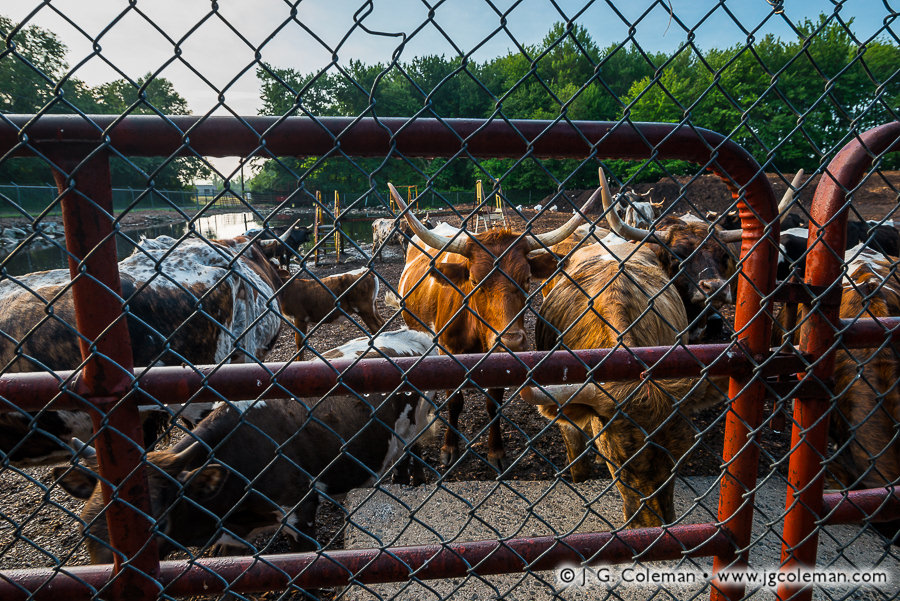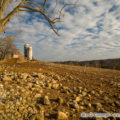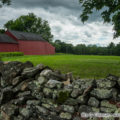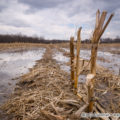
Texas Longhorns on feedlot, Watertown, Connecticut
© 2016 J. G. Coleman
Enclosed by a mesh of chain-links, distinctive Texas Longhorns laze away the early morning on a feed lot in Connecticut’s Naugatuck Valley. Overnight rains have left droplets clinging to the gate and the humid air imparts a lingering haze to the sky and nearby grove of shade trees.
Not all of Connecticut’s livestock farms are situated on grassy, rolling hills and sprawling countryside. Feedlots such this one in Western Connecticut are able to fatten up cattle more quickly than could be achieved if they were grazing on open pastures. The faster they pack on the pounds, the faster they can be sent off to market to turn a profit. Not to mention that, for a given herd, a feedlot can be much more compact than a comparable pasture.
Indeed, the economic advantage of using feedlots over pastures is indisputable and this model has proven useful for some Connecticut farmers. All of that increased productivity translates to more affordable meat for you and I. On the opposite side of the coin, purveyors of more expensive, grass-fed beef are quick to extoll the culinary virtues of raising livestock on pastureland. Older, grass-fed cattle produce more flavorful meat, they insist.
Purchase a Fine Art Print or Inquire About Licensing
Click here to visit my landing page for “Yankee Farmlands № 72” to buy a beautiful fine art print or inquire about licensing this image.
Want to See More?
Be sure to check out all of the work from my on-going Yankee Farmlands project, a journey throughout the Connecticut countryside in celebration of New England’s agricultural heritage.





